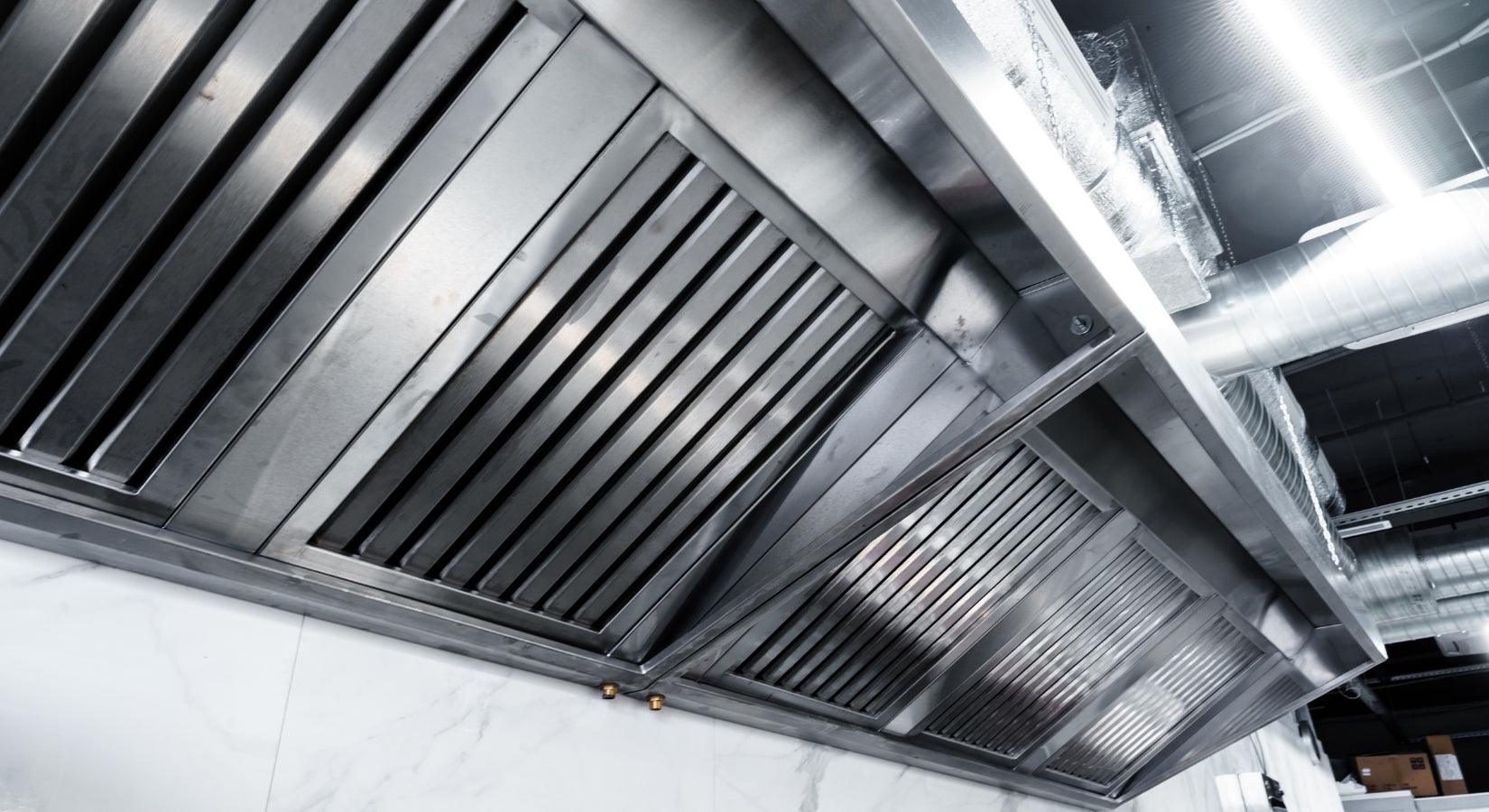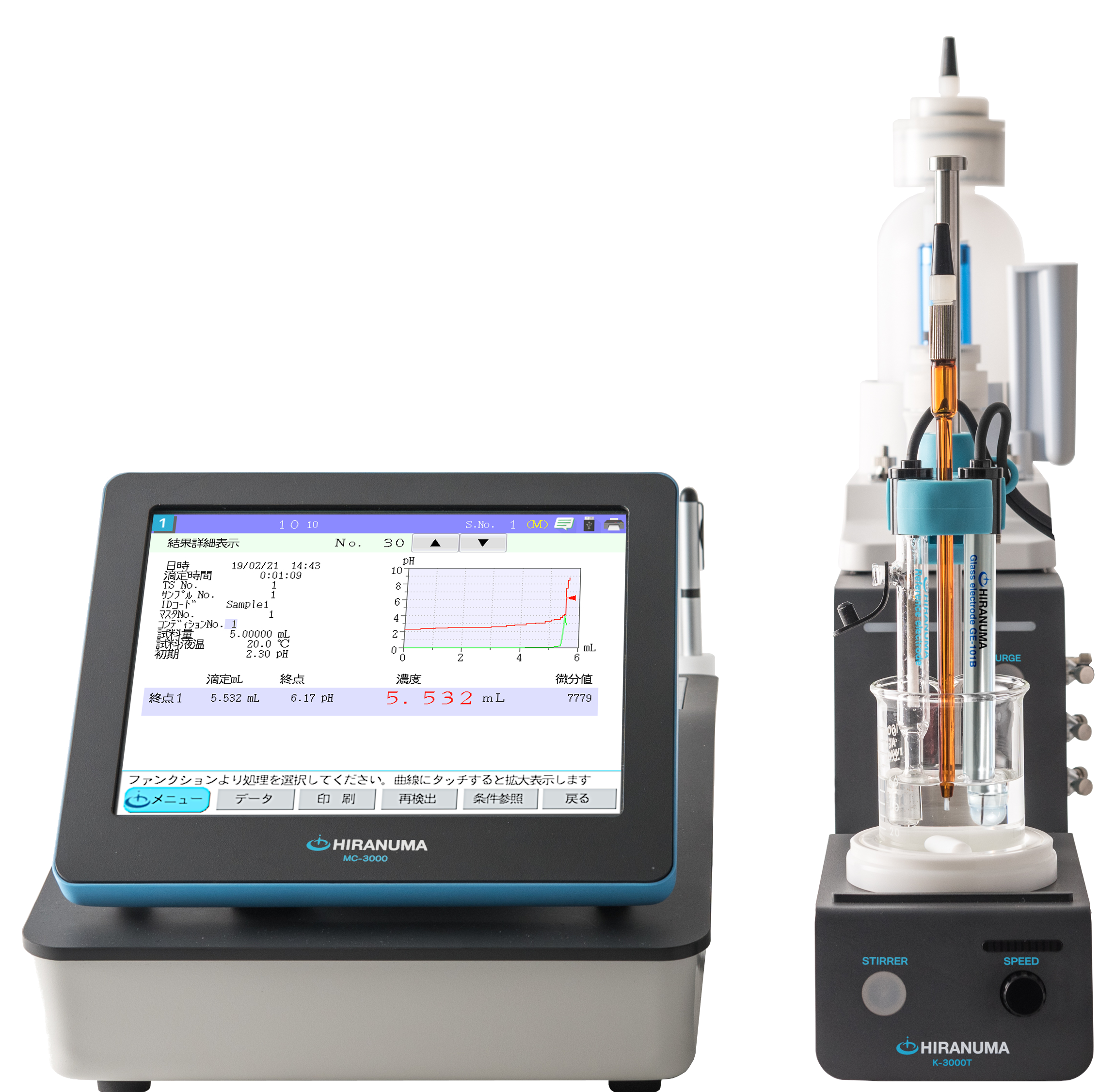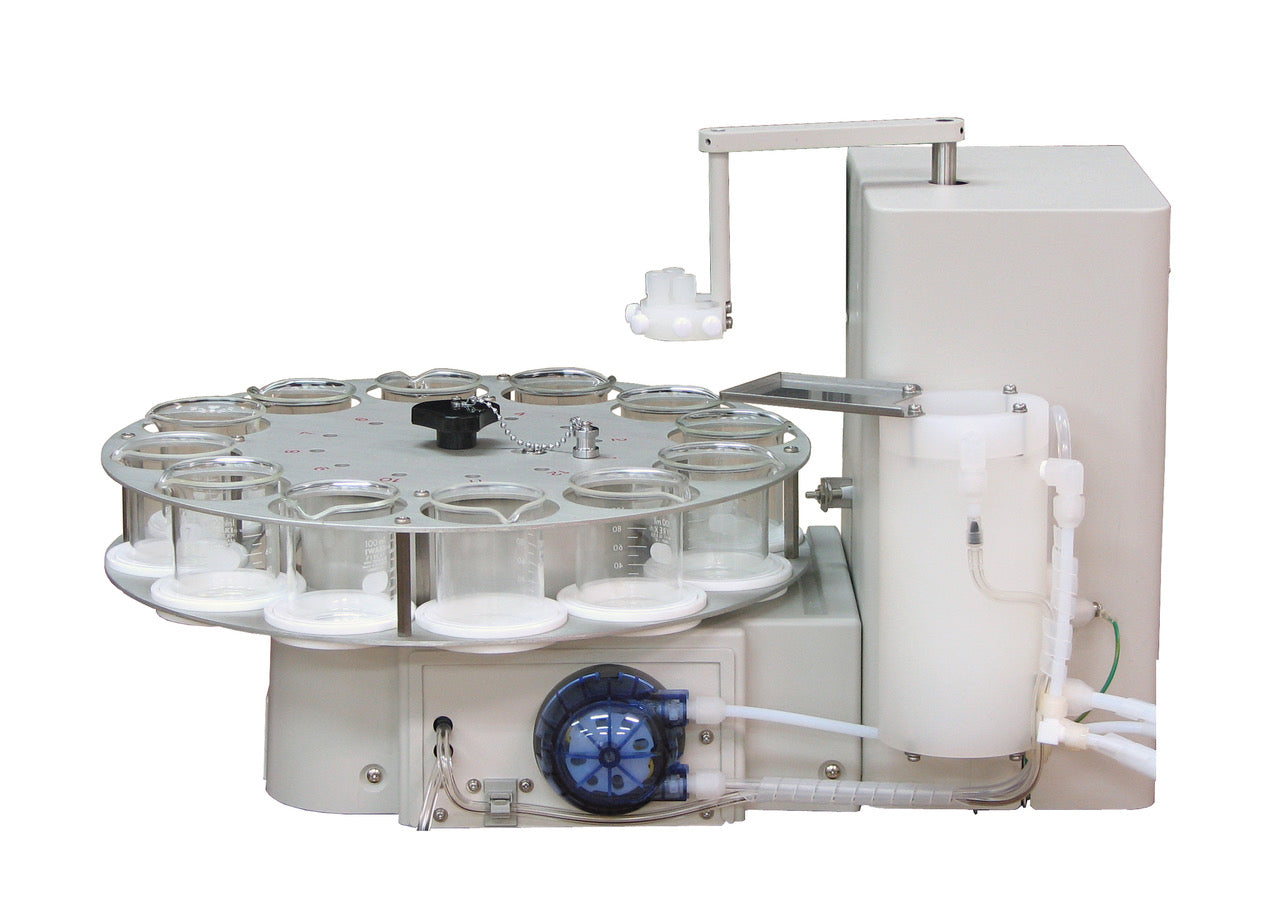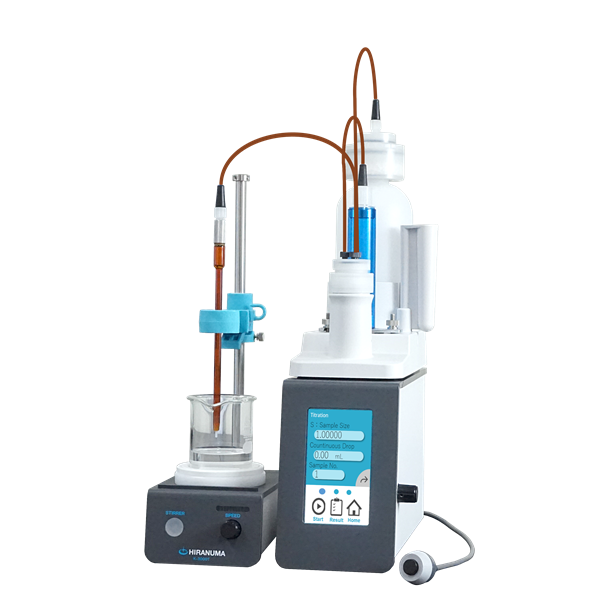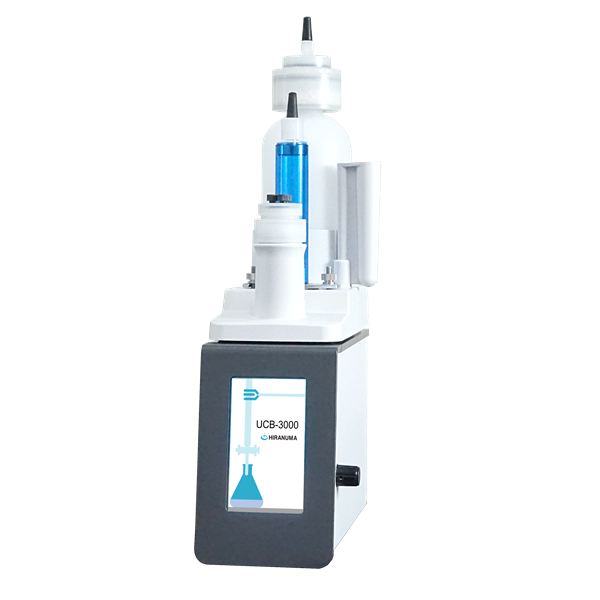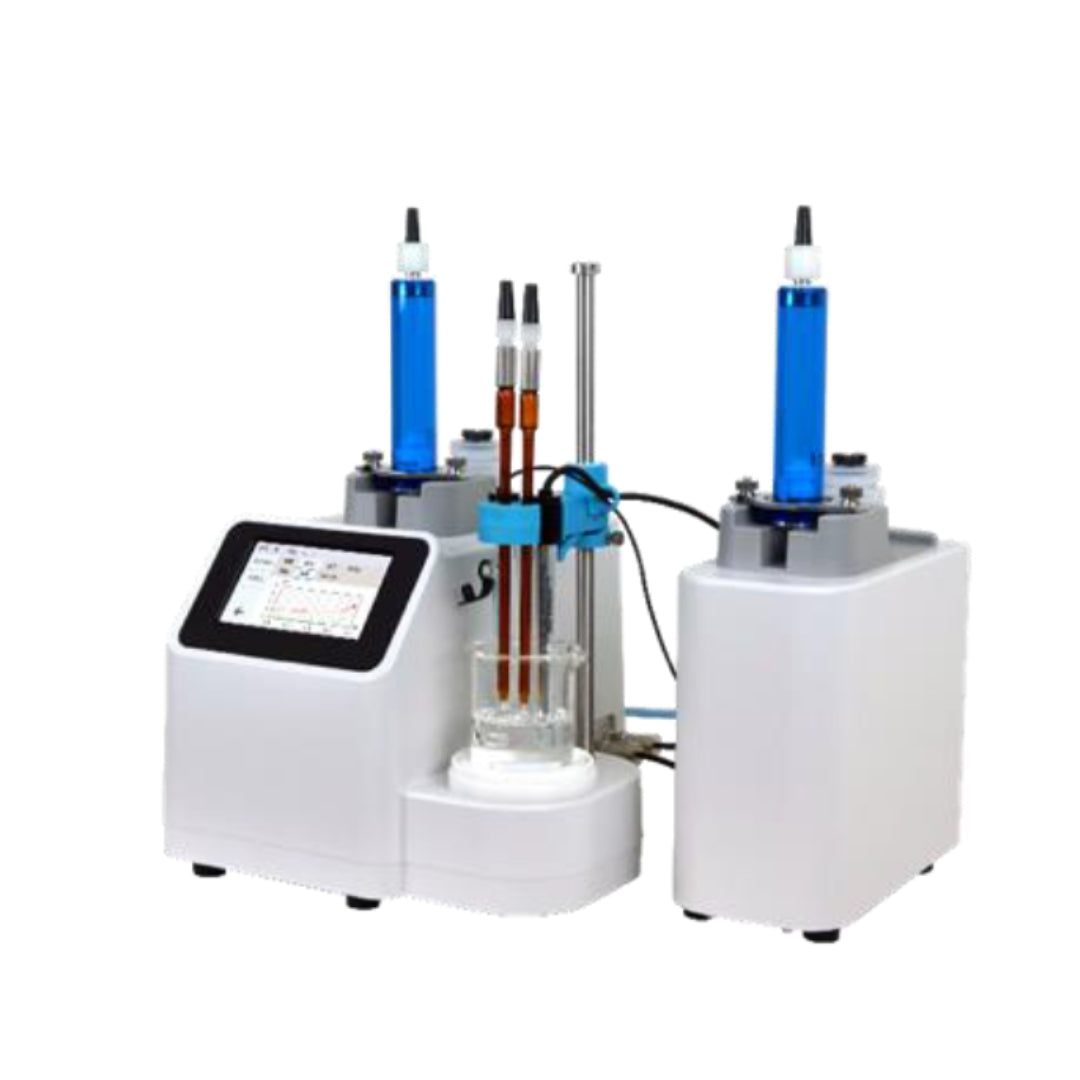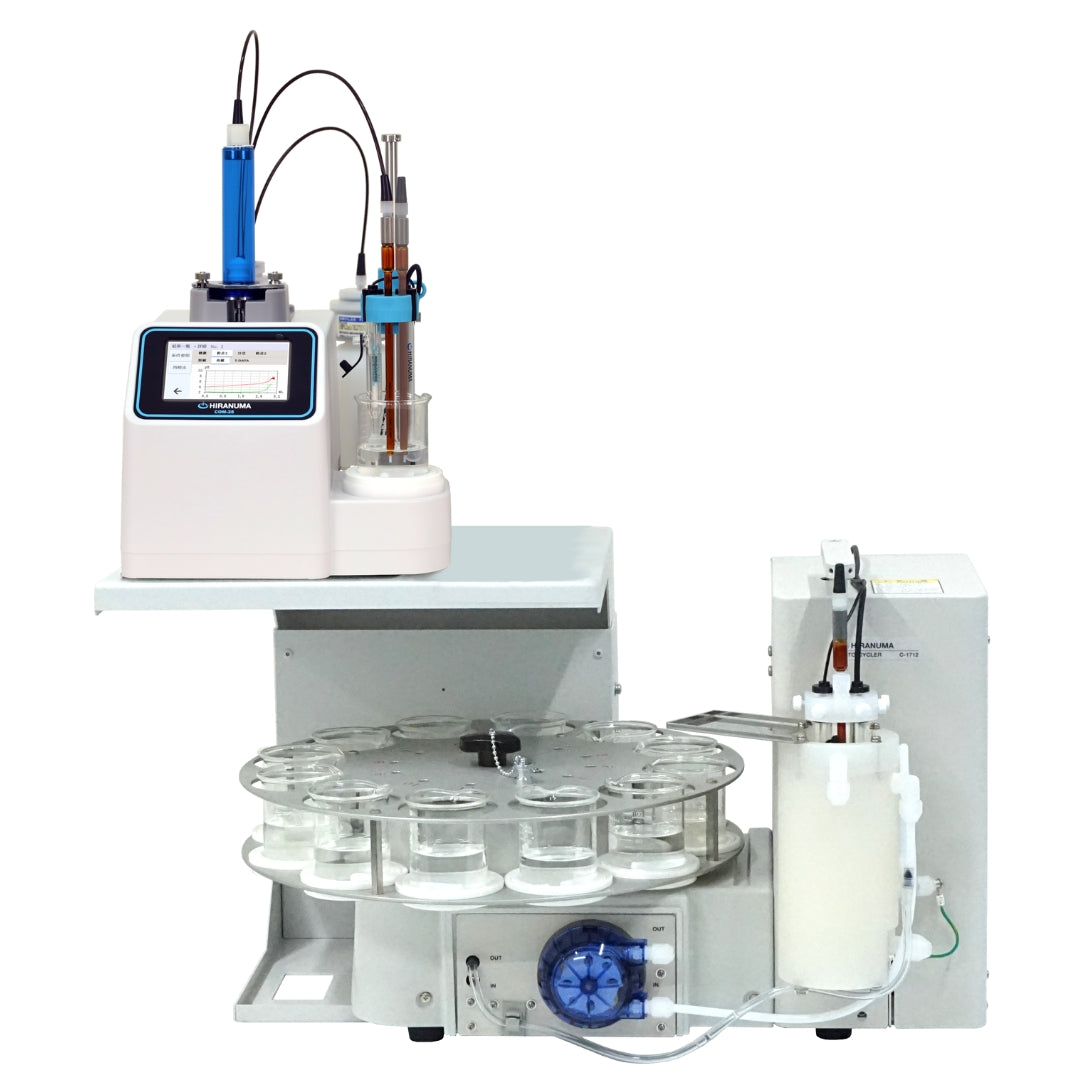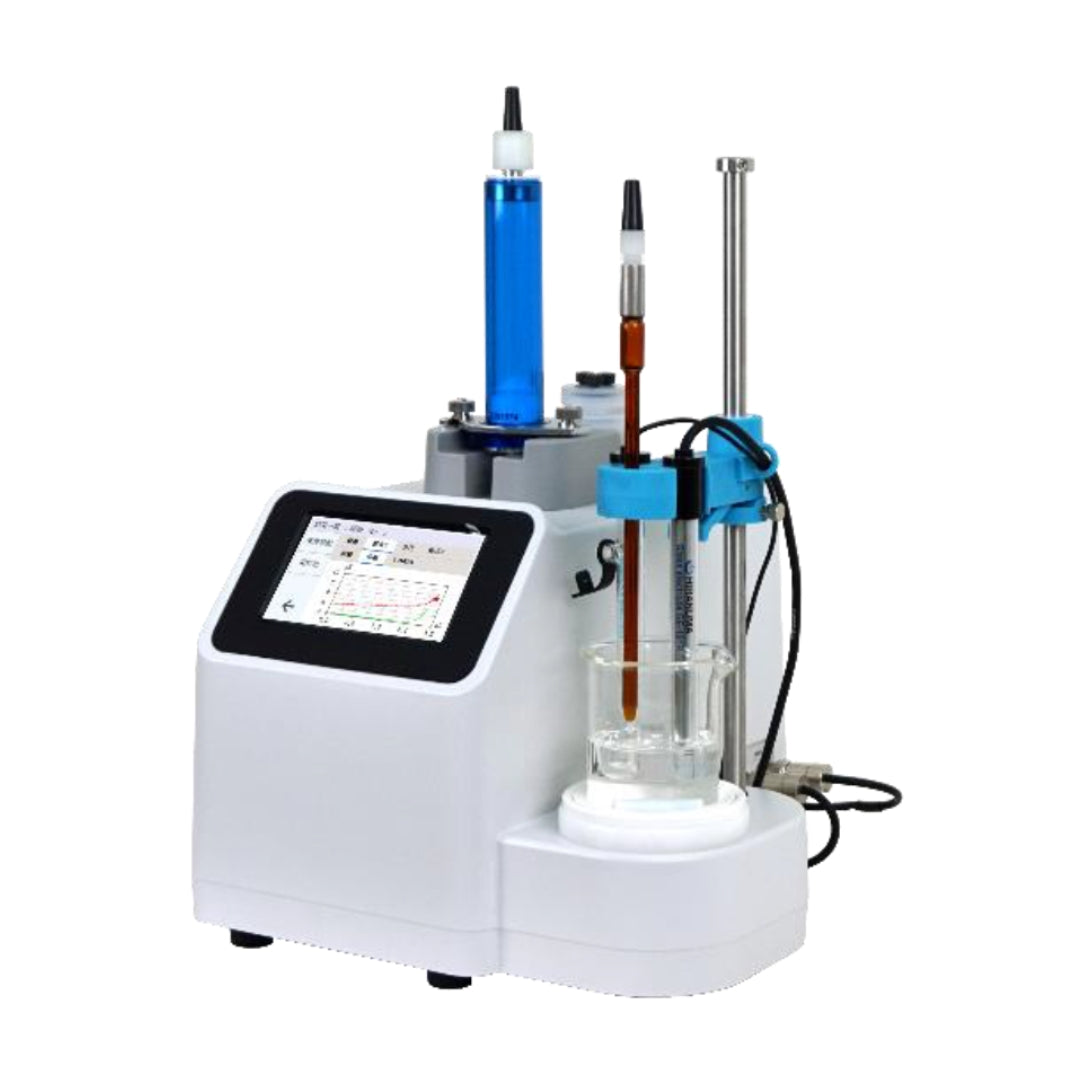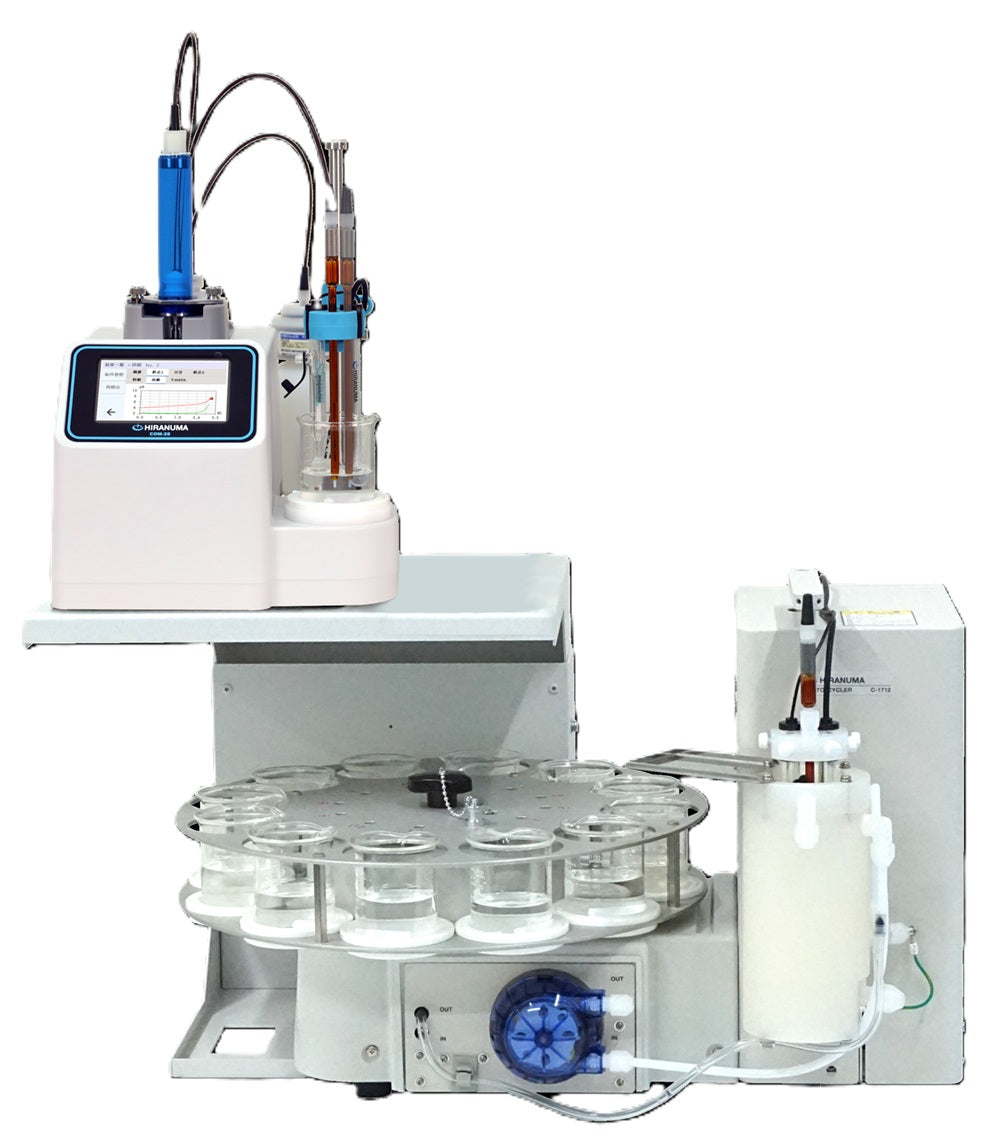| HIRANUMA APPLICATION DATA | Automatic Titrator | Data No. | G6 | Apr. 5,2019 |
| Metals | Determination of ferrous and ferric ion in steel cleaning solution |
1. Abstract
A wide variety of the determination methods for each component in acidic solution containing ferrous ion (Fe2+) and ferric ion (Fe3+) has been developed. This report introduces an example of the successive determination for ferric and ferrous ions in the steel cleaning solution. First, Fe3+ ions are determined by chelatometric titration with EDTA at acidic pH using salicylic acid as the indicator (purple →yellow). The all Fe2+ ions are continuously oxidized to Fe3+ ion with ammonium peroxodisulfate. Finally, the Fe3+ ion oxidized from Fe2+ is determined by chelatometric titration with EDTA titrant as well as the above description.
| Fe³+ + Na₂EDTA → FeEDTA + 2Na+ |
| Fe²+ → Fe³+ + e- |
2. Configuration of instruments and Reagents
| (1) | Configuration of instruments | ||
| Main unit | : | Hiranuma Automatic Titrator COM series (M type photometric unit for photometric titration with 530 nm optical filter) |
|
| (2) | Reagents | ||
| Titrant | : | 0.1 mol/L EDTA standard solution | |
| Oxidizing solution | : | Ammonium peroxodisulfate (Ammonium persulfate) | |
| Indicator reagent | : | 2 % salicylic acid in ethanol solution | |
3. Measurement procedure
| (1) | Dispense 1 mL of sample into a 100 mL tall beaker with volumetric pipette. |
| (2) | Add 60 mL of DI water. |
| (3) | Add 0.2 mL of 2 % salicylic acid in ethanol solution. |
| (4) | Immerse photometric probe and start titration with EDTA standard solution. |
| (5) | After the endpoint for Fe³+ ion is detected, add approximately 1 g of ammonium peroxodisulfate during waiting time (S. Timer, 120 sec) to oxidize Fe²+ to Fe³+ ion. |
| (6) | Continuously titrate with EDTA standard solution. |
4. Measurement conditions and results
Examples of titration conditions
(1) Titration for Fe³+ ion

(2) Titration for Fe²+ ion

Measurement results
Measurement results of Fe³+ ion
| Number of measurement |
Size (g) |
Titrant volume(mL) |
Fe³+ ion Concentration (%) |
|---|---|---|---|
| 1 | 1 | 4.178 | 23.521 |
| 2 | 1 | 4.162 | 23.431 |
| 3 | 1 | 4.220 | 23.757 |
| Statistic calculation |
Avg. | 23.6 g/L | |
| SD | 0.168 g/L | ||
| RSD | 0.71 % | ||
Measurement results of Fe²+ ion
| Number of measurement |
Size (g) |
Titrant volume(mL) |
Fe³+ ion Concentration (%) |
|---|---|---|---|
| 1 | 1 | 4.178 | 23.521 |
| 2 | 1 | 4.162 | 23.431 |
| 3 | 1 | 4.220 | 23.757 |
| Statistic calculation |
Avg. | 23.6 g/L | |
| SD | 0.168 g/L | ||
| RSD | 0.71 % | ||
Examples of titration curves

5. Note
The following tips could improve measurement accuracy.
(1) Successive titration of Fe3+ and Fe2+ ions
The stability constant of EDTA Chelate for Fe2+ ion is low at acidic pH, thus this method utilize the property that the coexisting Fe3+ ion can selectively be reacted with EDTA. The applicable pH region is 2 ~ 3.
(2) Oxidizing agent for Fe2+ ion
Ammonium peroxodisulfate is used as oxidizing agent for Fe2+ ion in this report, but hydrogen peroxide is also usable instead. In either case, please note that the excessively added reagents are likely to generate air bubbles which interfere the photometric titration.
Keywords: Ferrous (Fe²+) ion, Ferric (Fe³+) ion, Chelatometric titration, EDTA, Photometric titration
*Some measurement would not be possible depending on optional configuration of system.

